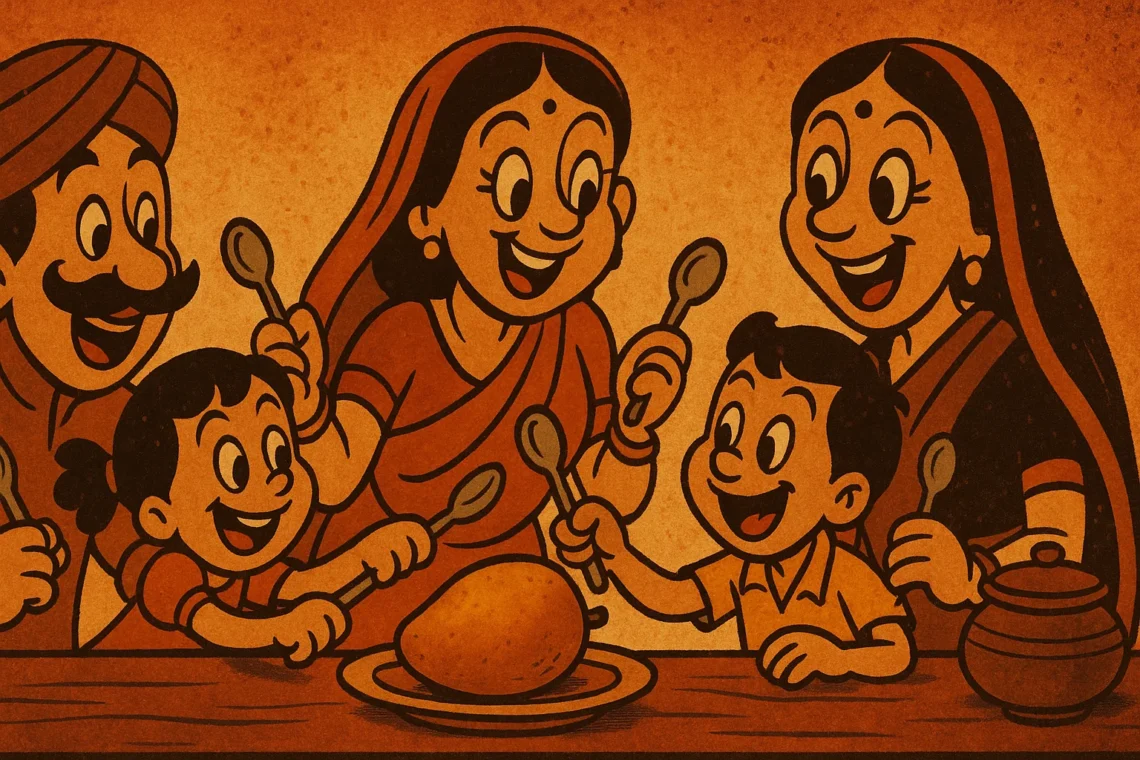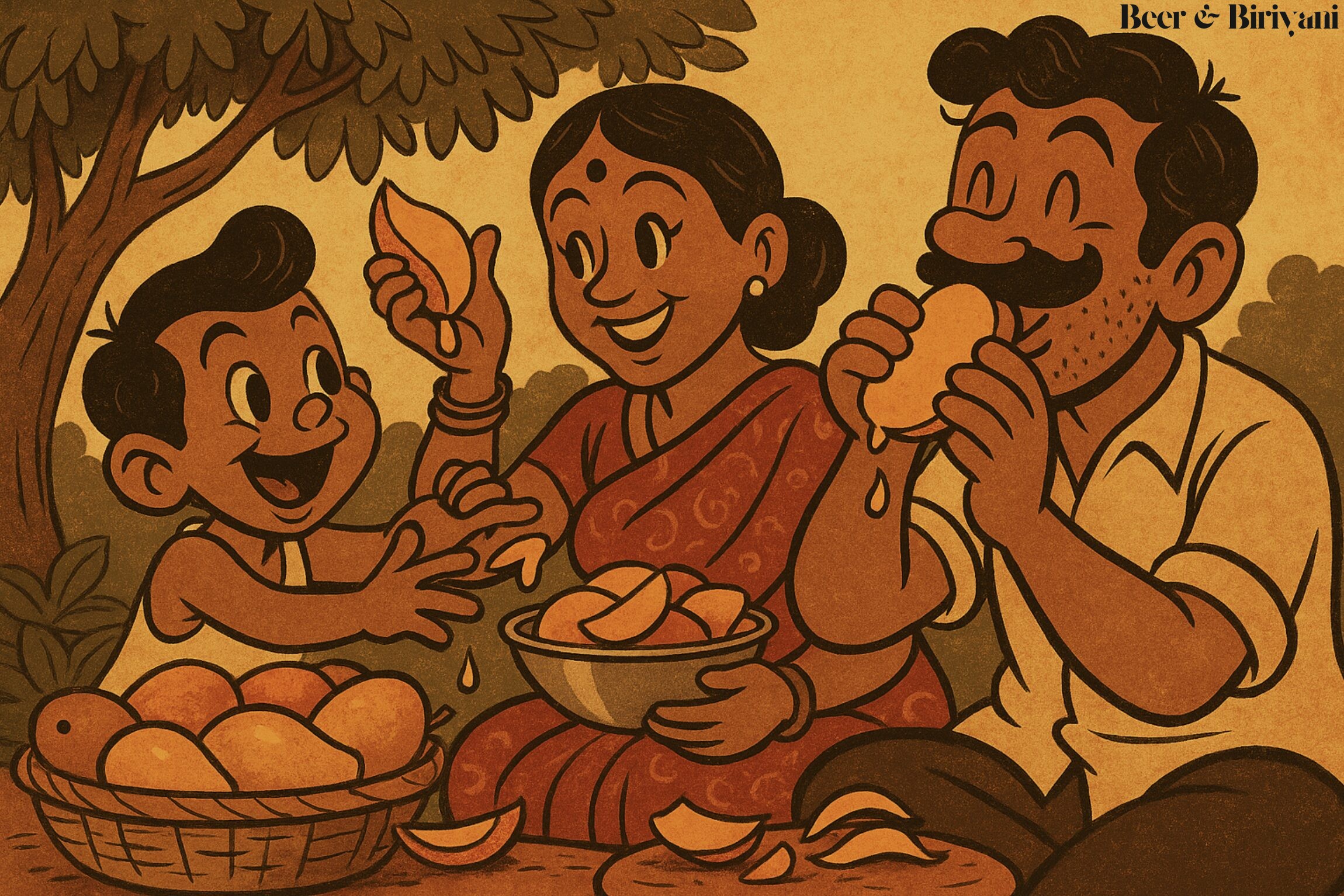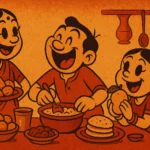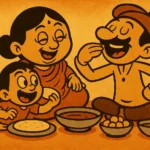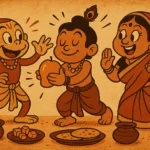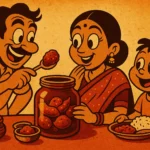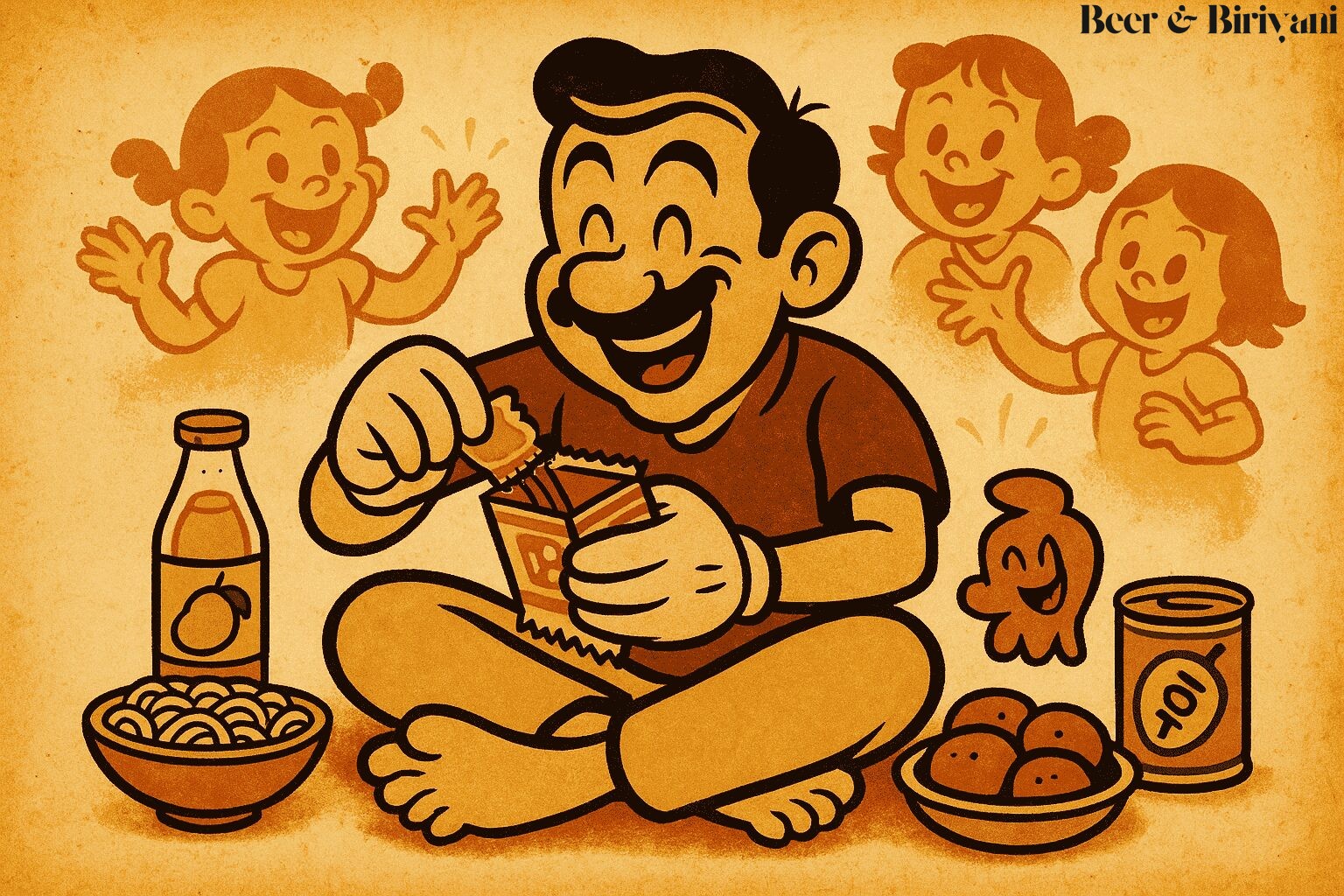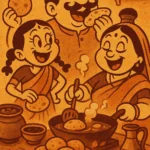There are mango stories, and then there are *our* mango stories—the ones not about alphonso pride or orchard tours, but about a single, overripe mango sitting in a steel plate while five cousins argued over who got the seed. It wasn’t pretty. It was sticky, chaotic, loud, and slightly unsanitary. But it was also perfect.
In our childhood summers, mangoes weren’t a dessert. They were an event. They arrived in wooden crates lined with straw, with the scent of fruit so heady it felt like someone had turned up the saturation on the whole room. Every mango was inspected, tapped, sniffed, and given a family-wide evaluation. “Yeh wala kal ka hai.” “Ismein mithaas kam hai.” “Bas isko fridge mat daalna!” The mango didn’t just live in the kitchen—it had a storyline.
The Democracy of Division
By the time the mango was declared ripe enough to eat, the entire house knew. And then came the question: how do you divide one mango among five children? Answer: steel plate, five teaspoons, zero patience. The mango would be peeled and plopped into the plate whole, without slicing. It looked like a golden blob—slippery, glorious, and just a little indecent. We’d crowd around like vultures in T-shirts, each armed with a spoon and a personal sense of entitlement.
There were no turns. It was open warfare. You jabbed, scraped, scooped, sometimes flicked another hand away. The seed was sacred territory. Whoever managed to trap it under their spoon was basically royalty for five minutes—till someone snuck it away mid-laugh or dramatic sneeze. That’s how we built reflexes. And rivalry.
Sticky Fingers, Full Hearts
Of course, there was no dignity in how we ate. Mango pulp in our eyebrows. Juice trailing down elbows. Bits of seed fiber in places no napkin ever found. But the joy wasn’t in being neat—it was in being in it. Fully immersed. Mango as sport. Mango as memory.
The funny thing is, none of us ever remembered the taste later. We remembered who got the seed. Who cheated by licking the spoon. Who tried to “accidentally” drop the plate so they could grab it all in the confusion. It wasn’t about the fruit. It was about being part of something messy and shared.
The Fridge vs. The Floor Debate
There was always that one grown-up who insisted the mangoes taste better cold. But in our house, mangoes were floor fruits. You sat cross-legged on the marble floor—cool from the ceiling fan breeze—eating with abandon. If anyone got up to wash their hands, their spot was immediately taken. No saving seats in mango politics. You left, you lost.
We tried to get fancy once. Someone suggested slicing the mango into equal parts. Using a knife. On a ceramic plate. It was… fine. But also joyless. Like watching a movie with no fight scenes. It was decided: mangoes were better unplanned. Better when shared in odd numbers. Better when someone cried because their spoon slipped and they missed a bite.
The Seed Years Later
Now, in my apartment in Austin, I buy mangoes from the international aisle. They’re okay. Neatly cut, peeled, and plated. I even have those cute little dessert forks to go with them. But once in a while, when no one’s watching, I place a whole mango in a bowl, peel it by hand, and eat it directly, pulp and all, with juice running down my wrist. No spoons. Just instinct.
And every time I hit the seed, I remember five loud voices, five bent spoons, and a floor we never bothered to clean after. I remember the taste of mangoes that didn’t need to be perfect, because the company already was.
One mango. Five spoons. Infinite joy. That’s the math I still believe in.
Born in Mumbai, now stir-frying feelings in Texas. Writes about food, memory, and the messy magic in between — mostly to stay hungry, sometimes just to stay sane.

